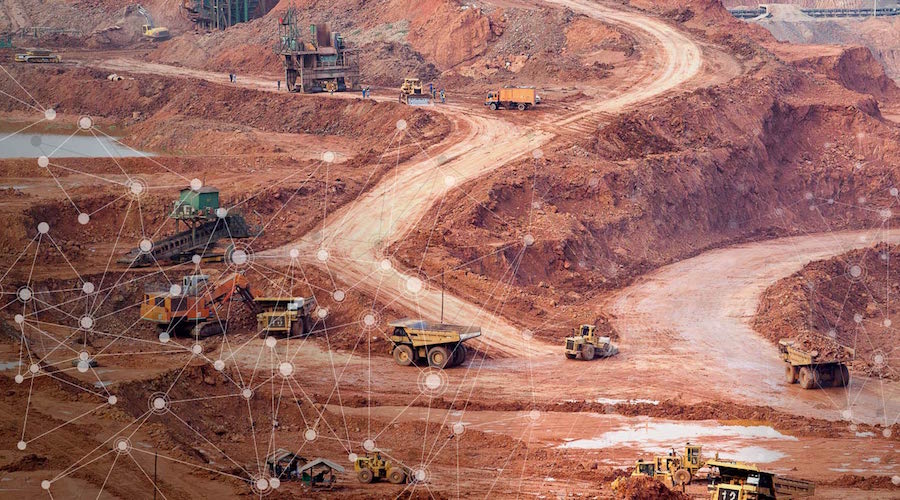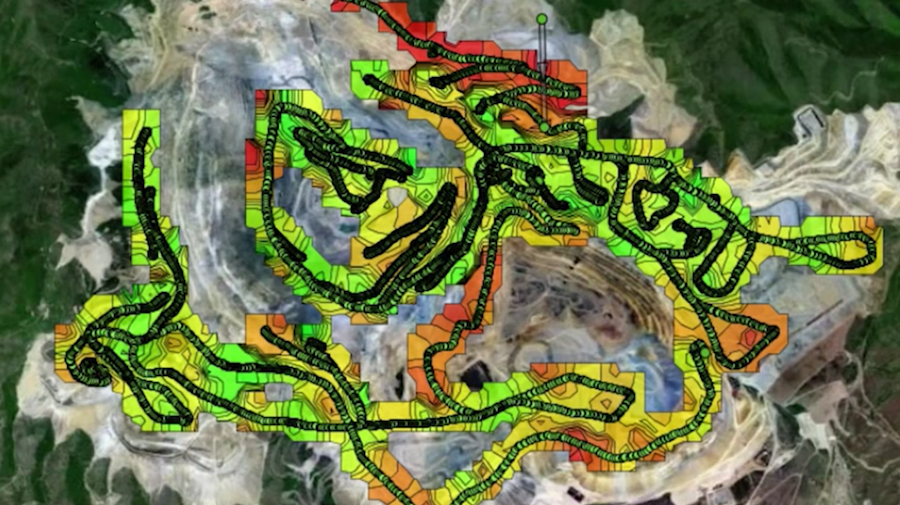Rajant is a U.S. company that offers mobile mesh technology for private wireless networks.
From initial military applications, its technology rapidly made its entrance into the mining world. In a few years, over 100 mines are making use of its Kinetic Mesh Network to monitor, manage and control large fleets of high-value equipment, vehicles, and staff.
Interviewed by MINING.COM at MINExpo International 2016, Rajant’s CEO, Bob Schena, explained how mining customers face the difficulty of operating in environments that tend to lack mobility, scalability, and bandwidth, and how they benefit from having a robust mobile system that allows them to track performance 24/7.
Full interview transcribed for clarity:
Bob Schena: Rajant is a company that makes extremely rugged wireless networking equipment for the mining industry, military, oil and gas, rail industries around the world.
MINING.COM: What is the origin of Rajant?
Bob Schena: Rajant was founded, I and a couple of other folks, founded it as a response to 9/11, to those towers being destroyed, and in particular the significant communication problems that happened that day and then for months afterward.
Our idea was to create a networking capability that could be set up quickly in an emergency and be set up by people who didn’t know much about networks. Often in remote or rugged places there is not a lot of networking people around, so our idea was that we would create technology that you would turn it on and it would be smart enough to figure out how to integrate an operating self, and that’s what we set up to do and that’s what we did.
MINING.COM: How did you expand into mining?
Bob Schena: We started out as a first-responder emergency response technology, then captured the attention of the U.S. military, from there we were able to learn how to scale our technology so that hundreds and hundreds of wireless nodes, which we call breadcrumbs, could be installed and build a network with little or no administration.
Additionally, the military wanted our networks to be able to move, so we worked hard and developed a technology that could go on vehicles, aircraft, people, they are all meshed together in a system that we call “Kinetic Meshing” and that all aspects of the network can be in motion.
Once we were able to scale the network to hundreds of nodes and have them all moving simultaneously, where the network kind of moves on its own, we caught the attention of a large mine operator down the States and we deployed in the mine on 160 vehicles, probably eight or nine years ago now. Our network has been operating for eight or nine years with no network downtime, at least from the application perspective.
So, that was our first foray into the mining industry and from that one mine we are close to 100 mines now on six continents. We have yet to install a mine in Antarctica, but it is a goal.

Photo: Rajant.
MINING.COM: Why is it important that control towers move at a mine?
Bob Schena: Well, mines are very dynamic places. The environment changes, the physical aspect changes, which is very unique, and one day there’s a mountain to your right and the next day the mountain is gone. It has moved to your left and now is blocking a tower or blocking a trailer. So the topography itself changes, the vehicles are in motion continuously, the mine changes. One day it is going north and couple of months later is going west. So given the dynamic aspect of the mining industry and the fact that our technology handles change so well is why we focused on making a network technology that could move and that all elements are able to move.
MINING.COM: What are the other aspects that miners are looking for?
Bob Schena: I think the biggest aspect is reliability, so that’s something that, as you can imagine, would be of interest for the military. So the military requirements for reliability—relative to our technology—are that the network really doesn’t go down. So we use different frequencies, multiple radios on the same device, that we switch back and forth between frequencies. We have a network that doesn’t have a controller. If you have a controller and you lose contact with the controller, your network goes down. We eliminated some of the points of failure, such as controllers, such as radio designed for backcall. We use odd frequencies and odd directions all the time with the bias towards being a network that is really hard to fail.

Diagram of a mine. Rajant shows the success of a mesh network when mobile nodes are able to route.
MINING.COM: And now you are using drones…
Bob Schena: Yes, our technology originally was designed for ground-based vehicles, for mining vehicles or military vehicles, so it is a terrestrial-based network. But as drone technology has advanced, what we’ve done recently is taking our InstaMesh software, which drives our meshing on mining vehicles and other vehicles, and we’ve adapted it to drone platforms, so we’ve taken InstaMesh from ground-based vehicles and put it in the air.
Our products are called breadcrumbs and we are now flying breadcrumbs, so the same scaling that we did with trucks, we can now do it with aerial platforms and fly 5, 10, 15, 20, 50 drones, all with nobody really flying them, we just instruct the drone as to what to do, where to go, how long to stay and when to come home. We can send the network’s mesh, the drones take off, they do what they have to do, and then they come back.
MINING.COM: You also have a satellite program you’re planning?
Bob Schena: We have an ongoing project with Morehead State University, down in Kentucky. Morehead is one in five universities with a space and science program, where the students actually hand build satellites. And in Morehead, five of their satellites have actually been to space, they are sending one to the moon, in a project with NASA, will go to the moon in 2018, and will orbit around the moon.
Our plan is to take our meshing software, that started on the ground, now is on drones in the air, our plan is to take it next to space-based platforms and mesh satellites together.
MINING.COM: Is the economics of that allowing it now?
Bob Schena: Think of them as throw-away satellites. A large satellite—if you’re lucky—for the military might cost $200 million. It is going to last in space for 15 years and all the components are hardened. A $5 chip on your cellphone aimed at space might become a $20,000 chip. So these throw-away satellites are designed to only last for 6-12 months in space. They don’t have to be hardened, so the expenses associated with them are dramatically lower than traditional satellite technology, plus, they don’t need a giant launch vehicle. They hitchhike a ride with something else going into space so launch costs are low and hardening costs are low. So what was traditionally hundreds or tens of millions of dollars, is now in the tens of thousands of dollars. So the cost for satellites is dropping dramatically, slightly behind that of drone technology, but rapidly declining.